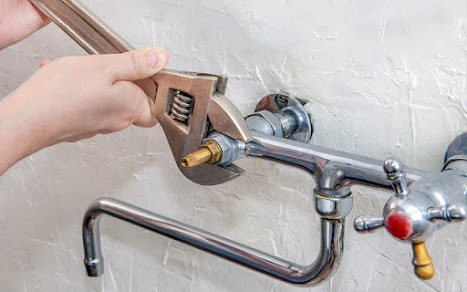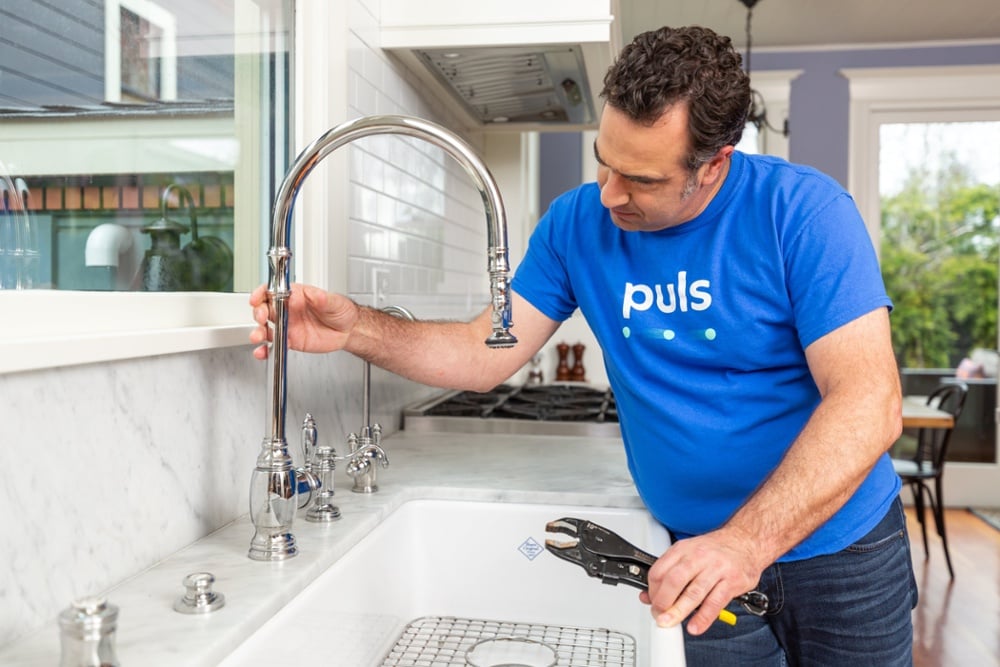Don't Take Chances: Common Appliance Issues That Need a Plumber
Don't Take Chances: Common Appliance Issues That Need a Plumber
Blog Article
They are making a few great observations relating to Why Do My Pipes Make Noises as a whole in this great article further down.

To diagnose loud plumbing, it is important to figure out first whether the undesirable sounds take place on the system's inlet side-in other words, when water is transformed on-or on the drain side. Noises on the inlet side have actually differed causes: extreme water stress, worn valve and also faucet parts, incorrectly attached pumps or other home appliances, inaccurately positioned pipe fasteners, and also plumbing runs containing too many tight bends or various other constraints. Noises on the drain side normally originate from poor place or, just like some inlet side sound, a layout including limited bends.
Hissing
Hissing sound that takes place when a faucet is opened somewhat normally signals too much water stress. Consult your local water company if you think this issue; it will certainly have the ability to tell you the water pressure in your area as well as can set up a pressurereducing shutoff on the inbound water supply pipe if required.
Thudding
Thudding noise, commonly accompanied by shivering pipelines, when a tap or appliance valve is turned off is a condition called water hammer. The noise as well as resonance are triggered by the resounding wave of stress in the water, which instantly has no area to go. Sometimes opening a valve that discharges water quickly into a section of piping containing a restriction, joint, or tee installation can generate the very same problem.
Water hammer can generally be healed by mounting fittings called air chambers or shock absorbers in the plumbing to which the issue valves or faucets are connected. These devices allow the shock wave created by the halted flow of water to dissipate in the air they contain, which (unlike water) is compressible.
Older plumbing systems may have brief upright areas of capped pipeline behind wall surfaces on faucet runs for the same purpose; these can eventually fill with water, reducing or damaging their performance. The remedy is to drain pipes the water system totally by shutting off the major water shutoff as well as opening all faucets. After that open up the primary supply valve and shut the faucets one at a time, starting with the faucet nearest the shutoff and also finishing with the one farthest away.
Babbling or Shrieking
Extreme chattering or shrieking that happens when a valve or tap is activated, and that usually goes away when the installation is opened completely, signals loose or malfunctioning inner parts. The solution is to change the shutoff or tap with a brand-new one.
Pumps and also devices such as cleaning equipments and also dish washers can move motor noise to pipes if they are improperly connected. Link such items to plumbing with plastic or rubber hoses-never rigid pipe-to isolate them.
Various Other Inlet Side Noises
Squeaking, squealing, damaging, breaking, as well as tapping typically are caused by the expansion or tightening of pipelines, normally copper ones providing hot water. The sounds occur as the pipes slide versus loosened bolts or strike close-by home framing. You can frequently pinpoint the location of the trouble if the pipelines are subjected; just follow the audio when the pipelines are making sounds. Probably you will certainly uncover a loosened pipe hanger or a location where pipelines lie so close to flooring joists or various other framing pieces that they clatter versus them. Affixing foam pipe insulation around the pipelines at the point of get in touch with should correct the problem. Make certain straps and wall mounts are protected as well as offer ample support. Where feasible, pipeline fasteners must be attached to substantial structural components such as foundation wall surfaces rather than to mounting; doing so lessens the transmission of resonances from plumbing to surfaces that can magnify and move them. If attaching fasteners to framework is inevitable, cover pipes with insulation or various other resilient product where they call fasteners, as well as sandwich the ends of new bolts between rubber washing machines when installing them.
Remedying plumbing runs that deal with flow-restricting tight or many bends is a last resource that should be embarked on only after seeking advice from a knowledgeable plumbing contractor. Regrettably, this scenario is fairly typical in older residences that may not have been developed with interior plumbing or that have seen a number of remodels, specifically by amateurs.
Drainpipe Sound
On the drainpipe side of plumbing, the chief goals are to get rid of surface areas that can be struck by falling or rushing water as well as to shield pipes to include inevitable audios.
In new building, bath tubs, shower stalls, toilets, as well as wallmounted sinks as well as containers need to be set on or against durable underlayments to minimize the transmission of audio through them. Water-saving toilets as well as taps are much less loud than conventional models; install them rather than older types even if codes in your area still permit utilizing older components.
Drains that do not run up and down to the basement or that branch into horizontal pipe runs supported at flooring joists or various other framing present especially bothersome sound troubles. Such pipelines are huge sufficient to radiate considerable vibration; they also bring significant amounts of water, which makes the situation worse. In new construction, specify cast-iron soil pipes (the large pipes that drain bathrooms) if you can manage them. Their enormity has a lot of the sound made by water travelling through them. Additionally, stay clear of transmitting drains in wall surfaces shown to bed rooms as well as rooms where people collect. Wall surfaces having drains need to be soundproofed as was defined previously, utilizing double panels of sound-insulating fiberboard and wallboard. Pipes themselves can be wrapped with special fiberglass insulation made for the purpose; such pipes have a resistant plastic skin (occasionally consisting of lead). Outcomes are not always satisfying.
WHY IS MY PLUMBING MAKING SO MUCH NOISE?
This noise indeed sounds like someone is banging a hammer against your pipes! It happens when a faucet is opened, allowed to run for a bit, then quickly shut — causing the rushing water to slam against the shut-off valve.
To remedy this, you’ll need to check and refill your air chamber. Air chambers are filled with — you guessed it — air and help absorb the shock of moving water (that comes to a sudden stop). Over time, these chambers can fill with water, making them less effective.
You’ll want to turn off your home’s water supply, then open ALL faucets (from the bathroom sink to outdoor hose bib) to drain your pipes. Then, turn the water back on and hopefully the noise stops! If you’re still hearing the sound, give us a call to examine further.
Whistles
Whistling sounds can be frustrating, as sometimes the source isn’t easily identified. However, if you can pinpoint which faucet or valve that may be the cause, you’ll likely encounter a worn gasket or washer — an easy fix if you replace the worn parts!Whistling sounds from elsewhere can mean a number of things — from high water pressure to mineral deposits. Your best plan of attack here is to give our plumbing experts a call. We’ll be able to determine where the noise is coming from and what the cause may be, then recommend an effective fix!
Cracks or Ticks
Cracking or ticking typically comes from hot water going through cold, copper pipes. This causes the copper to expand resulting in a cracking or ticking sound. Once the pipes stop expanding, the noise should stop as well.
Pro tip: you may want to lower the temperature of your water heater to see if that helps lessen the sound, or wrapping the pipe in insulation can also help muffle the noise.
Bangs
Bangs typically come from water pressure that’s too high. To test for high water pressure, get a pressure gauge and attach it to your faucet. Water pressure should be no higher than 80 psi (pounds per square inch) and also no lower than 40 psi. If you find a number greater than 80 psi, then you’ve found your problem!
Next step is to give us a call in order to install a pressure regulator. Trust us, you don’t want to wait to resolve this issue. Not only is the sound annoying, but high water pressure can be destructive to your home — including damaging certain appliances, like your washer and dishwasher.
Dripping
You might be accustom to the slow quiet drip your kitchen faucet makes. You might have even tuned out your bathroom sink dripping and drabbing all day long — but it’s time to find its cause.
A slow drip could signify a variety of easy to fix issues, such as a worn out O ring, or loose part. And by ignoring the drip, you could be wasting up to 2,000 gallons of water a year! So start conserving water — get it looked at ASAP.
https://www.pwessig.com/blog/2018/december/why-is-my-plumbing-making-so-much-noise-/

We were guided to that write-up on Diagnose Unwanted Plumbing Noises through an associate on another blog. Do you know somebody who is curious about the subject? Take a moment to share it. Thanks for taking the time to read it.
Set An Appointment Report this page